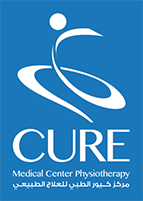Physiotherapy Cases

Golfer’s elbow is a condition that causes pain on the inner side of your elbow, where the tendons of your forearm muscles attach to the bony bump on the inside of your elbow. The pain may spread into your forearm and wrist as in the physiotherapy treatment methods
A motor vehicle accident (MVA) can cause a variety of injuries to both the driver and any passengers. Some injuries can lead to a lifetime of chronic pain if not dealt with immediately after a car accident. Your car insurance covers a portion of your physiotherapy treatment
Chronic pain syndrome (CPS) is a common problem that presents a major challenge to health-care providers because of its complex natural history, unclear cause, and lack of response to conventional therapy. CPS is a poorly defined condition, as it is a very broad condition. General speaking, authors suggest that any pain that persists longer than the reasonably expected healing time for the involved tissues should be considered chronic pain, generally this is considered 6 months or longer
There is often some side effects following surgery. One of the most frequent ones is pain. Other common issues following surgery are decreased range of motion, weakness and adhesions of the skin near the scar
Most episodes of neck pain are due to muscle strain or soft tissue sprain (ligaments, tendons), but it can also be caused by a sudden force (whiplash). These types of neck pain often improve with time and non-surgical care, such as physiotherapy
Repetitive strain injuries (RSI) are a family of injuries affecting tendons, tendon sheaths (the layer covering the tendon), muscles, nerves and joints. They cause persistent or recurring pains most commonly in the neck, shoulders, forearms, hands, wrists, elbows and lower limbs.
Common Types of Physiotherapy Cases and Their Treatments
Physiotherapy addresses a wide range of conditions, each requiring specific treatment approaches. Musculoskeletal conditions, such as back pain, neck pain, arthritis, and joint injuries, are commonly treated using manual therapy, exercise programs, and posture correction techniques.
Sports injuries, including ligament tears, sprains, and tendonitis, are managed with rehabilitation exercises, soft tissue mobilization, and strength training to restore function and prevent re-injury. Neurological disorders, such as stroke, multiple sclerosis, and Parkinson’s disease, benefit from physiotherapy through gait training, balance exercises, and neuro-motor retraining to improve mobility and independence.
The Role of Physiotherapy in Managing Chronic Pain
Physiotherapy plays a critical role in chronic pain management by addressing the root causes of discomfort rather than just masking symptoms. Through manual therapy, including massage, joint mobilization, and soft tissue manipulation, physiotherapists help reduce muscle tension and improve circulation. Therapeutic exercises strengthen weak muscles, enhance flexibility, and correct imbalances contributing to chronic pain, particularly in arthritis, fibromyalgia, and lower back pain.
How Physiotherapy Helps After Surgery: An In-Depth Guide
Post-surgical physiotherapy is essential for recovery, helping patients regain mobility, strength, and function while minimizing complications. Immediately after surgery, physiotherapy focuses on pain management and swelling reduction using techniques such as ice therapy, compression, and gentle movements. Range-of-motion exercises prevent stiffness as healing progresses, while progressive strengthening exercises restore muscle function. For orthopedic surgeries like knee replacements and ACL repairs, gait training and balance exercises ensure proper movement and prevent compensatory injuries.
People Also Ask
What are the most common physiotherapy cases treated by professionals?
Physiotherapy professionals commonly treat musculoskeletal issues such as back pain, neck pain, arthritis, and post-fracture rehabilitation. They also handle sports injuries, including sprains, ligament tears, and post-surgical recovery for procedures like ACL reconstruction. Neurological conditions such as stroke recovery, multiple sclerosis, and Parkinson’s disease are also key areas of treatment. Post-surgical rehabilitation is another common focus, particularly for joint replacements and orthopedic surgeries.
How effective is physiotherapy for managing chronic pain syndrome?
Physiotherapy is highly effective in managing chronic pain syndrome by addressing the root causes of pain and improving overall function. Techniques such as manual therapy, therapeutic exercises, electrotherapy, and posture correction help reduce pain intensity and enhance mobility. Common physiotherapy injuries also incorporate pain management strategies, such as relaxation techniques and education on movement patterns, to prevent pain aggravation.
Can physiotherapy help with post-surgical recovery?
Physiotherapy is crucial in post-surgical recovery. It restores mobility, strength, and function while reducing pain and swelling. After surgery, physiotherapists design personalized rehabilitation programs, including stretching, strengthening exercises, and manual therapy, to accelerate healing.
What is the recovery time for neck pain with physiotherapy treatment?
The recovery time for neck pain with physiotherapy varies depending on the severity and underlying cause of the condition. Mild neck pain caused by muscle strain or poor posture may improve within 2 to 4 weeks with regular physiotherapy sessions, including stretching and strengthening exercises. More severe cases, such as cervical disc issues or chronic neck pain, may require 6 to 12 weeks or longer for significant improvement.
Conclusion
Physiotherapy plays a vital role in treating various conditions, from musculoskeletal and sports injuries to neurological disorders and post-surgical recovery. By using targeted techniques such as manual therapy, therapeutic exercises, and rehabilitation programs, physiotherapists help patients regain mobility, reduce pain, and enhance overall well-being.
Whether managing chronic pain or recovering from surgery, physiotherapy provides a safe and effective path to long-term health and improved quality of life.

